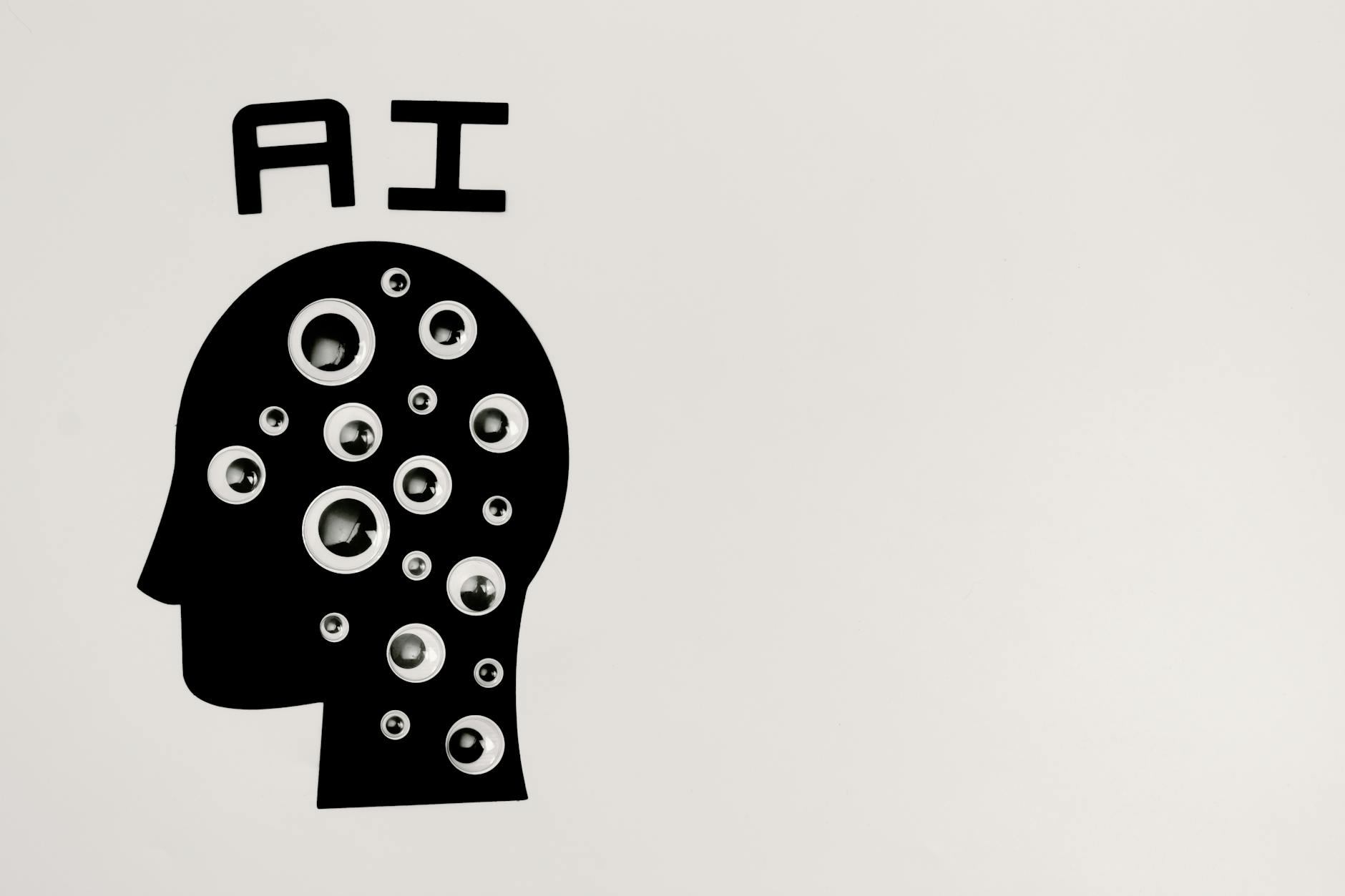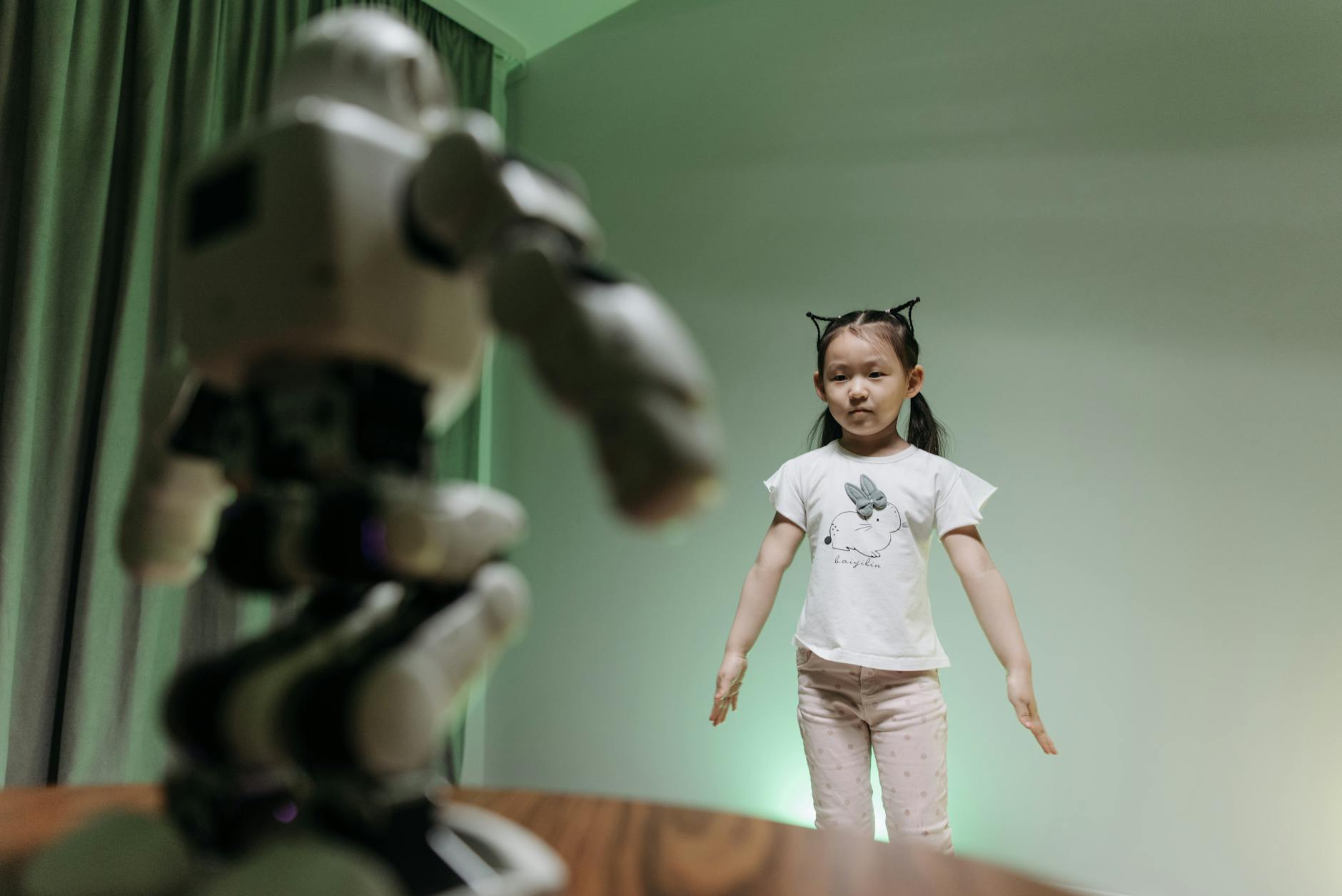Tech Revolution: AI and Machine Learning Contrasts
Understanding AI and ML
Artificial intelligence (AI) and machine learning (ML) are making waves in tech right now. Their roles are different, and knowing what sets them apart is essential for anyone entering this space.
Differentiating AI and ML
Artificial intelligence is like teaching computers to think and act like humans—tasks include reasoning, learning, solving problems, and understanding languages. (Harvard Business Review)
Machine learning, a part of AI, focuses on teaching computers to learn from data. Instead of programming every task, we give these systems data, and they figure it out. This capability means better predictions and smarter decisions. (Microsoft Azure)
Here’s a simple breakdown of how AI and ML stack up:
| Thing | AI | ML |
|---|---|---|
| What It Is | Making machines imitate human thinking. | Using data to teach machines. |
| What It Does | Includes tasks like figuring things out and learning. | Uses data for predictions and decisions. |
| Examples | Diagnosing diseases, translating languages. | Recommendation systems, recognizing images or voices. |
| How It Works | Rule-based or learning. | Always learning with data. |
Evolution of AI Technologies
AI didn’t spring up overnight. It has grown from an idea to something that’s changing our daily lives. At first, AI was about rules and logic—machines stuck to a set path. These systems hit limits because managing rules can only go so far.
Machine learning changed that game, bringing adaptability and growth. Then came deep learning, taking things a step further with big neural networks that help systems learn on their own and make complex decisions. (Columbia University)
Check out these highlights in AI’s journey:
| Year | Big Moment | What Happened |
|---|---|---|
| 1950s | Idea of AI | Kicking off the concept with logical, rule-based thinking. |
| 1980s | Expert Systems | AI mimicking expert-level decisions. |
| 1990s | Machine Learning | Learning from data to boost accuracy. |
| 2010s | Deep Learning | Using huge neural nets for smarter recognition and decisions. |
| 2020s | Generative AI | Conversational AI, like ChatGPT, becoming part of day-to-day life. |
AI and ML are still on the rise, gaining momentum with better computer power, access to heaps of data, and fresh algorithms. They’re reshaping industries, making everyone smarter, and helping us make decisions more efficiently.
AI Applications in Everyday Life
AI is sneaking its way into our daily routines, changing how industries work and giving humans a helping hand in many surprising ways.
Impact on Various Sectors
Smart tech is showing up in all sorts of places, doing stuff that used to fall on human shoulders. Here’s how some areas are feeling the AI touch:
- Healthcare: AI is lending a hand with spotting illnesses, guessing patient outcomes, and personalizing treatments like a pro. Think of machine learning as your doctor’s new sidekick, catching problems early and suggesting better fixes (Government Accountability Office).
- E-commerce: Clever systems in e-payments are like your personal detective, sniffing out dodgy patterns and throwing up flags if things look fishy (IoT For All).
- Customer Service: Bots with brains are popping in to help with customer service, answering questions and sorting issues before you even know you have them (Harvard Business Review).
- Education: AI geniuses like ChatGPT are busy crafting educational material and grading papers, setting up learning geared just for you.
- Military and Security: AI gets tactical, sifting through data to spot threats and help make clever plans.
Enhancing Human Capabilities
There’s chatter about machines taking jobs, but really, AI’s main gig is to boost what humans can do, not replace them. Here’s how it partners with people:
- Smart Decisions: AI gives you the lowdown to make better choices in money, health, and law.
- More Output: By taking over dull tasks, AI frees us up for the cool creative stuff, making us way more productive.
- Better Talk: AI tools help translate languages or provide communication aids, letting folks connect more easily all around the globe.
- Personal Touch: AI is that friend who knows just what you like, offering up custom experiences in fields like marketing, Netflix binging, and shopping sprees.
- Deeper Learning: Computers taking a page from our brains to learn like us, getting smarter with deep learning tricks (Microsoft Azure).
Here’s a quick look at AI’s role across some areas:
| Sector | Application | Benefits |
|---|---|---|
| Healthcare | Disease spotting, treatment plans | Catch problems early, tailor care |
| E-commerce | Fraud lookout | Keep transactions safe |
| Customer Service | AI chatbot help | Answers on the fly |
| Education | AI-driven learning | Customized lessons |
| Military/Security | Data crunching | Spot threats, plan smart |
AI’s got its fingers in many pies, upping the game in different fields and making things work smoother and faster. It’s a big part of life now, changing stuff in ways we’re just starting to get used to.
Exploring Machine Learning
Machine learning’s where computers get a pinch of human smarts, using data and algorithms to mimic our learning process, all in a bid to get better and sharper. Grasping ML’s ins and outs is a step toward understanding the bigger picture of artificial intelligence.
Supervised vs. Unsupervised Learning
Two main flavors of machine learning exist: supervised and unsupervised learning. They each have their own quirks and roles to play.
Supervised Learning
Here’s the deal with supervised learning—it’s like a teacher-student setup. You feed the model a bunch of data that’s already paired with the right answers. The model makes guesses, the teacher (data) corrects it, and this back-and-forth goes on until the model nails it.
- Example: Think of your email’s spam filter, sorting out junk from legit emails.
- Use Case: Self-driving cars spotting pedestrians and other objects using this kind of approach.
| What’s What | Supervised Learning |
|---|---|
| Data | Labeled |
| Method Part | Guess and Fix |
| Examples | Spam Filters, Image Sorting |
Unsupervised Learning
Flip the script; unsupervised learning doesn’t need any of that hand-holding labeled data. Here, the model hunts for patterns, trying to make sense of the chaos without outside help.
- Example: Marketers grouping customers based on their shopping habits.
- Use Case: Recommendation engines that surprise you with stuff you might like.
| What’s What | Unsupervised Learning |
|---|---|
| Data | Unlabeled |
| Method Part | Spot Patterns |
| Examples | Market Segments, Outliers |
Methods and Technologies Within ML
ML is a smorgasbord of methods and tech, each fitting snugly with different kinds of data and challenges.
Algorithms and Techniques
- Decision Trees: Sorts things into various boxes based on questions about the data.
- Use Case: Diagnosing whether someone’s coming down with a cold or not.
- Random Forests: Sounds mysterious, but it’s just many decision trees working together for better results.
- Use Case: Predicting stock surges and dips.
- Support Vector Machines (SVMs): This one slices data with a fine line, setting different classes apart.
- Use Case: Recognizing your cat in your photos.
- K-Means Clustering: Groups data into clusters without pre-existing labels.
- Use Case: Breaking down shoppers into types.
- Neural Networks: Uses layers of interlinked nodes for finding intricate patterns.
- Use Case: Recognizing faces on social media.
Deep Learning
Deep learning’s the heavy-hitter of ML, running with huge neural networks and tackling gobs of data. It auto-magically learns to make predictions minus the hand-coded feature extraction (Columbia University).
- Methods:
- Convolutional Neural Networks (CNNs): Masters of image-related data.
- Recurrent Neural Networks (RNNs): Spotting sequences, like in time-stamped info.
Technological Impact
ML’s the engine behind lots of cool stuff, from cars that drive themselves to health care that’s all about you as an individual. Self-driving vehicles, medical scans, streaming suggestions, and chatbots—ML’s fingerprints are everywhere (MIT Sloan).
Getting a handle on these ML methods and techs opens up a world of understanding AI’s mechanics and glimpsing the flashy new horizons it’s shaping.
Practical Examples of AI and ML
Everyday Applications
Artificial intelligence and machine learning have become everyday tech wizards, quietly working their magic in many corners of our lives. You might not always see them, but they’re there, doing their thing.
Take E-Payment systems for example. Smart algorithms keep a watchful eye on credit card activity, catching any sneaky spending habits that seem out of the norm. If something fishy pops up, they sound the alarm or ask for a second look to keep fraudsters at bay.
Table: AI in Everyday Applications
| Application Area | AI Technology Used | Function |
|---|---|---|
| E-Payment Systems | Fraud Detection Algorithms | Spots odd spending, sends alerts |
| Virtual Assistants | Natural Language Processing (NLP) | Chats with users, gets jobs done |
| Online Shopping | Recommendation Algorithms | Suggests stuff based on shopping habits |
| Smartphones | Facial Recognition | Unlocks phones, verifies payments |
| Music Streaming | Personalization Algorithms | Creates playlists from listening trends |
Consider helpers like Siri, Alexa, and Google Assistant; they rely on the magic of Natural Language Processing (NLP) to set reminders, crack jokes, and even manage your smart home. On the shopping front, sites use sneaky algorithms to figure out what you might want to buy, based on your browsing. And with smartphones, facial recognition is your new best friend for unlocking your device or verifying your purchases.
Cutting-edge Innovations
But wait, AI and ML don’t stop at the basics. They’re zooming ahead in industries you’d never think of, revolutionizing fields left and right.
Take self-driving cars. These mechanical beasts use deep learning and computer vision to make quick decisions on the road, sparing us from potential accidents.
In healthcare, AI is like the doctor’s sidekick, helping put together clinical notes and figuring out tricky diagnoses (Hotjar). It’s even getting better at reading medical images, meaning illnesses get caught earlier, which is always a win.
Table: AI and ML in Cutting-edge Innovations
| Innovation Area | AI/ML Technology Used | Impact |
|---|---|---|
| Self-Driving Cars | Deep Learning, Computer Vision | Drives alone, cuts down accidents |
| Medical Imaging | Machine Learning Models | Better diagnosis, finds diseases earlier |
| AI Surgery Assistants | Robotics, Precision Algorithms | Performs surgeries precisely |
| Chatbots | NLP, Machine Learning | Boosts customer service, automates messaging |
| Energy Management | Smart Grid Technologies | Balances energy loads for efficiency |
Neural networks, inspired by human brains, push computers to think like us. With deep learning, they achieve new heights of accuracy and efficiency (Microsoft Azure).
When businesses jump on the AI and ML bandwagon, they’re turning their data goldmine into actionable insights, making processes a breeze and speeding up decision making (Columbia University). AI isn’t just the future; it’s happening now, in real-time, improving how we live and work.
Benefits and Challenges
Peeking into what AI and ML bring to the table helps us see both the good and the hiccups they cause.
Advantages of AI and ML
AI and ML have watchable perks. When they lend their magic to different fields, they boost how things work, ease of use, and creativity.
Enhancing Human Capabilities
AI’s no longer just in the realm of sci-fi; it’s doing stuff folks used to do, like spotting diseases, switching languages, and even handling customer chats. Rather than kicking people out of a job, AI’s the new sidekick, making everyone better at what they do (Harvard Business Review).
| Area | How AI/ML Gets in the Mix | How it Helps |
|---|---|---|
| Healthcare | Spotting Illnesses | More precise diagnosis and faster catches |
| Customer Service | Chatbots Everywhere | Always-open help and quick chats |
| Translation | Language Tools Rockin’ | Busting through language barriers fast |
Solving Problems with a Smile
Machine learning, AI’s curious cousin, does its thing by sifting through loads of info and picking out patterns. It spells out what’s happened, guesses what could come next, and even advises on what might be best (MIT Sloan).
| Kind of ML | What It Does | Where It Fits |
|---|---|---|
| Descriptive | Spelling out the past | Digging into numbers in business smarts |
| Predictive | Guessing the future | Making sales guesses in stores |
| Prescriptive | Giving the best advice | Suggesting stuff you’ll love when shopping online |
Getting a Handle on Biases
Yet with greatness comes the sticky parts, like how AI and ML can pack a punch with biases.
Bias in Algorithms
ML models learn from heaps of data, but if that info’s biased, those biases snowball. And nobody wants funky models making hiring calls, gatekeeping loans, and other big-life stuff. We gotta keep the learning material fair and square.
Ethical Considerations
Thinking ethically is huge when tossing AI and ML into the mix. They’ve gotta be clear, fair, and responsible, or else folks lose faith. Letting AI run wild without a reins could land us in hot water.
Addressing Bias
To tackle bias, we need to keep AI in check with regular check-ups. Embracing ethical rules and norms ensures things stay on the straight and narrow.
| The Challenge | The Fix |
|---|---|
| Data Bias | Use a good mix of data sources |
| Transparency | Routine checks and balances |
| Ethical Smarts | Follow ethical codes and structures |
By shining a light on the ups and the downs. We get a better grip on what AI and ML can do, while staying sharp about the road bumps that need fixing.
Industries Using AI and ML
Healthcare and Medical Fields
AI and machine learning are giving healthcare a major upgrade. They’re not just playing doctor; they’re genuinely improving how we detect diseases early, streamline treatments, and uplift patient care. Imagine cutting down those agonizing waits for pre-approvals from insurers or envision surgical procedures practically steering themselves (GAO). AI takes on roles you wouldn’t believe, like generating possible diagnoses or piecing together clinical summaries. It’s like having a digital sidekick that stops healthcare professionals from burning out by making daily tasks more manageable (Columbia University).
| AI & ML Applications | Benefits |
|---|---|
| Disease Detection | Spot illnesses early and start treating them quicker |
| Treatment Enhancement | Custom-fit treatment plans for each patient |
| Administrative Tasks | Quicker pre-approvals from insurers |
| Surgical Procedures | Surgeries that almost run themselves |
E-commerce and Retail
E-commerce is loving AI and ML as they craft tailor-made shopping experiences and keep an eye out for shady shoppers. These tech wonders tweak what products you see, all based on what you’ve been eyeing on their site, making browsing a lot more enjoyable.
And, let’s not forget those AI-powered chatbots. They’re like the ultimate customer service reps, answering questions faster than you can say “Where’s my order?”
| AI & ML Applications | Benefits |
|---|---|
| Personalized Shopping | Makes shopping feel unique to each user |
| Fraud Detection | Safer transactions, less worry |
| Customer Engagement | Rapid responses through AI helpers |
| Product Recommendations | Smart marketing that boosts sales |
From hospitals to online shopping carts, the line between AI and machine learning blurs, with each bringing its own kind of magic to the table. As they continue to innovate across different sectors, they keep pushing the boundaries of what’s possible and inventive.
Future of AI and ML
Growth and Expansion
Artificial intelligence (AI) and machine learning (ML) are shifting through the gears, moving from the imaginations of sci-fi buffs straight into everyday life. Tech advancements and their increasing popularity across industries are sparking this surge. Businesses are hopping on board, using AI and ML to change up their operations, products, and how they chat with you, the customer.
Deep learning, the whiz kid of machine learning, is front and center. This subfield uses giant neural networks to catch onto complex patterns and make educated guesses with little human input. As a result, we’ve got self-driving cars cruising around, doctors getting a hand with medical diagnosis, and apps serving recommendations that are eerily on point.
AI and ML are really good at taking over jobs we’ve traditionally done ourselves, but instead of sidelining us, they’re actually boosting our abilities. Think better data handling, fewer slip-ups, more efficient day-to-day operations, and sharper decision-making.
Ethical Considerations
With great power comes great responsibility, right? As AI and ML gear up for the long haul, their moral compass matters more than ever. Top worry? Bias. If these systems learn from skewed data, they’ll simply mirror and even magnify those prejudices. So, we’ve got to keep a sharp eye and ensure the data playing field is fair and level.
Then there’s privacy sticking its head out of the sand. To work their magic, AI and ML gobble up heaps of data. It’s super important that this data is gathered, tucked away, and handled with care to keep folks’ privacy intact and maintain trust in these systems.
And let’s not forget the job shake-up. With AI chipping in, some jobs could see the exit sign. So, it’s crucial we ramp up reskilling and upskilling opportunities for those affected to soften the blow.
| Ethical Worry | What’s the Deal? | How to Tackle It |
|---|---|---|
| Bias in AI | Systems can copy and even crank up data biases. | Cook up fair training datasets. |
| Privacy | Needs a ton of data which can threaten personal privacy. | Be super careful with data collection and usage. |
| Job Shake-Up | Certain jobs might get replaced by AI. | Ramp up reskilling and upskilling options. |
As AI and ML gallop forward, tackling these ethical issues squarely is a must to fully harness their benefits while keeping the pitfalls in check.
Implementing AI and ML in Business
Artificial intelligence (AI) and machine learning (ML) offer big opportunities for businesses no matter what industry they are in. These tech wonders help companies make work smoother, make customers happier, and stay ahead of the game.
Fancy New Tech
AI and ML come with some pretty sweet tools that can really shake up how businesses run the show:
- Guesswork Magic (Predictive Analytics): Companies can predict what’s coming next—whether it’s customer faves, market swings, or future trends—giving them a leg-up in decision-making (Microsoft Azure).
- Nifty-Doodle Suggestions (Recommendation Engines): Like how Netflix and Amazon show stuff you’ll probably love—these smart algorithms know just what you’ll want, keeping folks more engaged and content.
- Listen-Talk Tech (Speech Recognition): Gadgets like Siri or Alexa can make sense of what you say, so your hands get a break and interactions get a boost.
- Smart Talk (Natural Language Understanding): This helps chatbots and support teams get what customers say, making them better at their jobs.
- Picasa for Pics (Image and Video Processing): AI does the heavy lifting in finding faces, things, or watching videos, which is handy for keeping things secure and managing loads of content.
- Feeling Finder (Sentiment Analysis): By checking out reviews and social posts, businesses see what folks are really feeling and can tweak their plans on the fly.
Throwing these techs into the mix means turning raw data into savvy insights, doing away with tedious chores, and making decisions based on solid info.
Stuff for Big Bosses to Think About
Rolling out AI and ML needs some serious brainwork and planning. Here’s what the bigwigs should keep an eye on:
| Thing to Think About | What’s in It |
|---|---|
| Data that Counts | Top-notch and relevant data is key. Keep it in check—clean, organized, and fresh. |
| Room to Grow (Scalability) | Solutions should be ready to expand with rising data and processing needs. Cloud services can be a lifesaver here. |
| Safe and Sound | Lockdown data and brainy algorithms from online baddies. Use solid security rules and tactics. |
| Playing Nice (Ethical Use) | Watch out for AI quirks like bias or privacy snoops. Set rules for fair play with this tech. |
| Sharpening Skills | Spend on teaching the crew about AI and ML. Make learning a regular deal. |
| Blend In (Integration with Existing Systems) | New tech should fit snugly into what you already got going on, so things flow just right. |
Those in charge should also be on the lookout for any hiccups AI and ML might bring; biases often sneak in from skewed data or dodgy algorithms. Fixing this means regular check-ups, using various data sources, and being clear about how algorithms get built.
Getting AI and ML up and running can really crank up how work gets done, make smarter choices happen, and boost customer happiness. Execs who double down on good planning, ethical angles, and skill-building can totally tap into these powerful tech tools.













